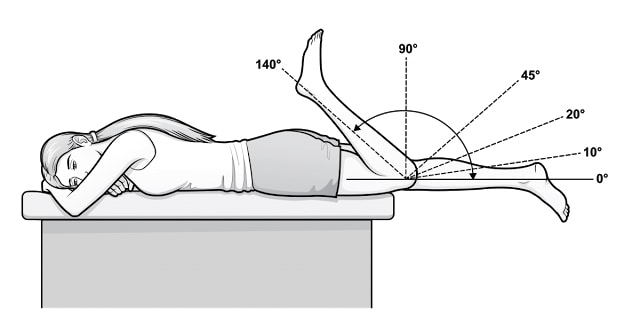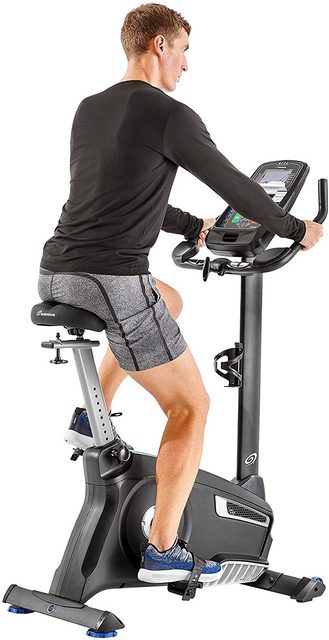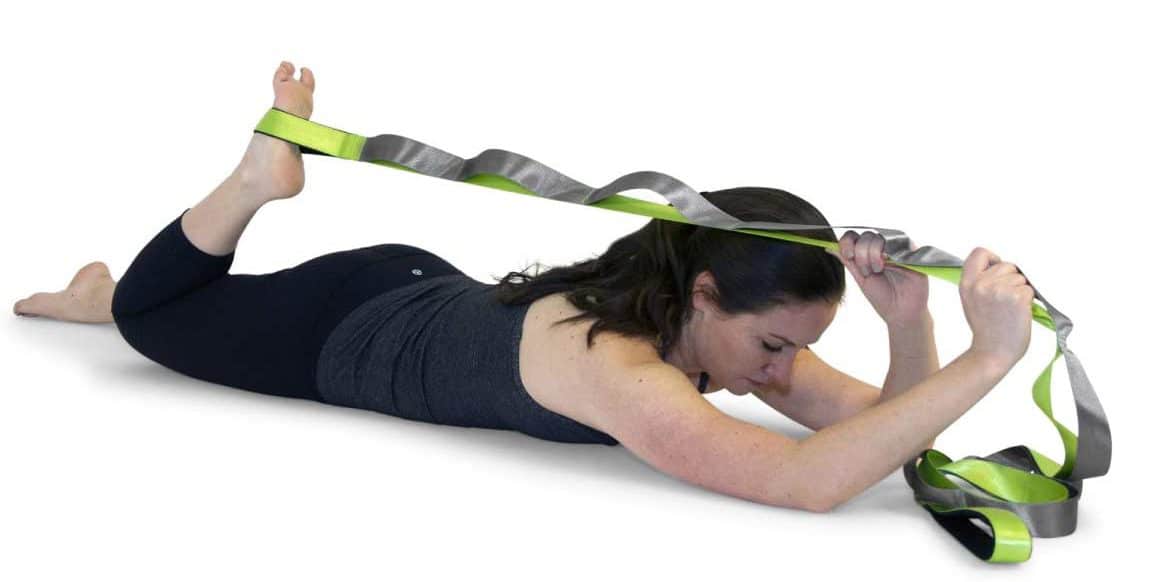
ROM or Range of Motion is a common topic brought up by ‘quadders’ and rightfully so. Getting back one’s range of motion is at the top of the list for many when you succumb to a quadriceps tendon rupture. When you literally go from a full ROM of perhaps 140 degrees or more (as pictured above), to having a ROM of just a few degrees after surgery, you better believe it is high on the priority list for us.
From the onset of this injury, you quickly realize that any degree of bending the leg results in a very intense pain that makes you quickly want to straighten your leg to avoid the agony. When you have your 2-week follow up with your Orthopedic Surgeon you are advised and prescribed your new leg brace. Your OS will go over the next 6-8-week plan of ROM with you using this new brace.
Now every Orthopedic Surgeon will probably offer different suggestions via the use of the brace, but the plan for me on both occasions for my injuries was to increase my ROM range via my leg brace by 20% every 2 weeks after the initial 6 weeks of being locked straight in the brace. My doc set the initial setting at 20 degrees so by the end of 6 weeks I was supposed to be at around 80 degrees of ROM although I was always a little more than that. I would say I was close or right at 90 degrees at the six-week point. At my follow up I was given the green light to start physical therapy the following week which of course excited the hell out of me. As before, I saw it as another little victory in my timeline of progress and of getting back to normal.
I would like to stress that everyone who is or has suffered a QTR will experience different rates of recovery speeds. You can’t force your body to recover faster than it will allow itself to and nor should you. Don’t make the mistake of being in a rush to get better. You will be back to normal or perhaps as close to normal soon enough, but it is going to take some time – quite a bit of time to be honest. So be smart and safe about your rehab and recovery phase of this injury.
The first 6 weeks is always the toughest with QTR. The 20 to 80-degree ROM is the hardest to reach and will seem to take forever, but once you reach 90 degrees and beyond the recovery time is much faster. You might have some sticking points for a while at certain ranges like I did. I think the hardest for me is to get past the point where you can fully rotate the pedals on a stationary bike. In the beginning every time I would try to ride one, I would just move the pedals back and forth as far as I could. The hardest part was to do a full rotation when I was just below the 90-110-degree range. However, once I got past that point my ROM increased very quickly.
I feel the stationary bike, whether standard as pictured above or a recumbent style is a perfect exercise to work on your ROM for your injured QTR(s). As I have mentioned elsewhere within this website, exercises such as swimming and walking in a pool are fabulous exercises for helping you get back your initial ROM, but the stationary bike should not be overlooked and is a fantastic piece of cardio equipment to regain a really broad ROM for your leg. You can purchase one of these bikes on Amazon.
Of all of the things that were mentioned above, the primary physical therapy that will take place from beginning to end is continuous stretching with proper form. Your physical therapist will go over numerous stretching exercises that you will perform. Both at the clinic and exercises that you will do at home on your own.
One piece of fitness equipment that was recommended to me and that helped immensely was a stretching strap with loops (as pictured below). The stretching strap will allow you to stretch your quads and tendon in similar ways your PT will stretch you at the clinic. Some of the stretches are unable to be performed unless you have another person to assist you. However with the loops that the strap provides, these challenging stretches can now be performed by oneself. You can purchase one of these inexpensive straps on Amazon.






